Last updated on May 18th, 2023
Spanning a distance of 1.7 miles, the Golden Gate Bridge is an iconic structure of the San Francisco Bay region. The bridge joins Marin County, California to the city of San Francisco. This suspension bridge was viewed as an engineering marvel upon its completion in 1937; in the world at that time, it was the longest primary suspension bridge. Japan’s Akashi Kaikyo Bridge now boasts the longest span in the world. These days, the Golden Gate Bridge, landmark of the West Coast, attracts millions of tourists and commuters each year.
35 Facts about the Golden Gate Bridge
1. Before the Bridge Existed
Prior to the existence of the bridge, the only way to go back and forth between San Francisco and Marin County was by way of ferry boats. This was not ideal and plans were put into place to make changes.
2. Rationale for the Bridge
A bridge to create a route between San Francisco and Marin County was deemed vital. At that time, San Francisco was the biggest American city still primarily served by ferry boats; this contributed to a deficiency in the growth rate of the city.
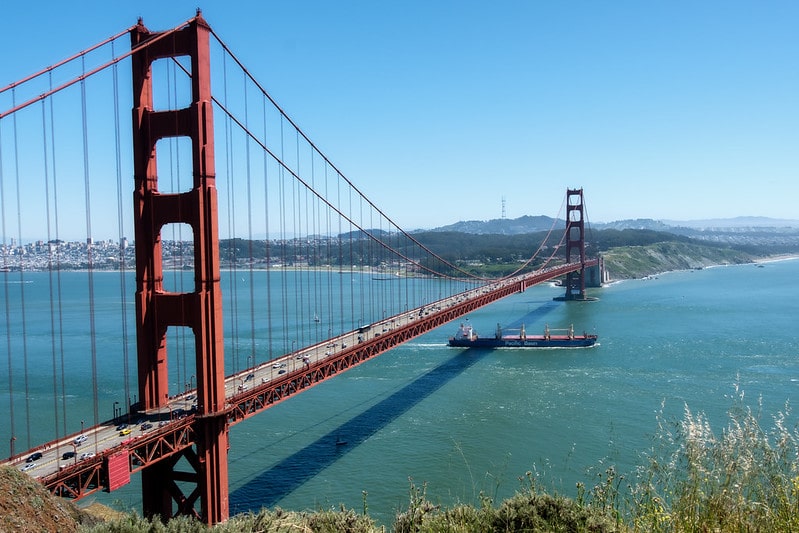
3. Design and Construction
Engineer Joseph Strauss was responsible for the design of this bridge and he was in charge of the overall design and building of the structure.
4. Initial Construction Proposal
In 1872, three years after the completion of the transcontinental railroad, a bid was made by Charles Crocker for the construction of a bridge that would extend over the Golden Gate Strait.
5. Bridge Budget
The bridge was constructed at a cost of roughly $35.5 million and came in ahead of schedule and under budget.
6. Local Financing
To finance the building of the bridge, local citizen used their own properties as collateral. This was done via bonds offered through the Golden Gate Bridge and Highway District.
7. Faith of the Local Citizenry in the Project
The faith of the local citizenry in the long-term economic value of the project was evident through the decisive approval by a three-to-one margin. In 1971, the bonds were retired.
8. Water Depth
Close to the bridge, the waters have depths in excess of 300 feet. For instance, the depth is over 100 feet between Alcatraz and Angel Island.
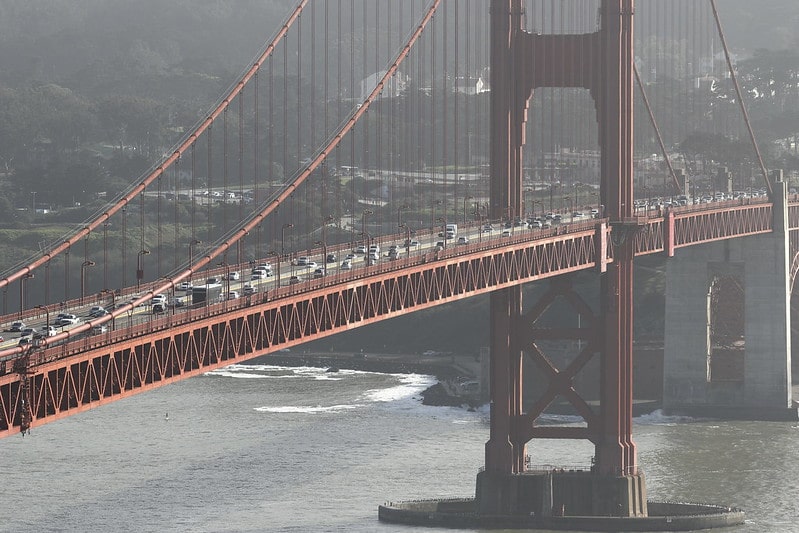
9. Bridge Weight
The bridge weighs in at a whopping 887,000 tons and contains roughly 88,000 tons of steel. Two towers are in place to support the two steel cables that anchor the bridge.
10. Dimensions
Ninety feet in width, the bridge has two sidewalks and six driving lanes. Between curbs, the driving lanes is 62 feet wide and each sidewalk is 10 feet wide. The street level is approximately 220 feet above water.
11. Suspension Cables
For the bridge, the cables were horizontally threaded between two enormous concrete blocks. Additional vertical cables were then added to connect the main cable to the deck of the bridge. This was done right at the construction site.
12. The Towers
The towers stand 500 feet above street level and 726 feet above the water. Each weighs 44,000 tons and one stands 4200 feet apart from the other.

13. The Bridge was Struck by an Earthquake Even Before it was Finished
The region was struck by an earthquake in June 1935 as workmen men were on top of the unfinished south tower of the bridge. It was reported that between 12 and 13 guys were on the tower at the time with no way of getting down.
14. The Orange Color of the Bridge was Intended Originally to be a Primer
To increase its visibility, it was lobbied that the bridge be painted in stripes of blue and yellow. However, when the steel came primed in a burnt red hue, it was decided by the consulting architect that the color was quite visible and more pleasant to the eye.
15. Life-saving Safety Net
While being constructed, a safety net was hung underneath the floor of the bridge, stretching 10 feet wider than the width of the bridge and 15 feet longer beyond its length. The net ended saving the lives of 19 workers, proving an invaluable precaution.
16. Many Firsts of Bridge Opening Day
On May 27, 1937, the opening of the bridge was celebrated by San Franciscans with Pedestrian Day. On that day, up to 200,000 individuals crossed the bridge. Some of them raced to be the first to push a baby stroller, roller skate and run across the Golden Gate Bridge.

17. Initial Toll
In 1937, the initial bridge toll was 50 cents each way. Nowadays, Golden Gate Bridge tolls are only collected in a single direction when southbound and heading into San Francisco.
18. Popularity of the Bridge
The bridge has been featured in a number of popular films. These include Rise of the Planet of the Apes, Dark Passage Pacific Rim and Vertigo.
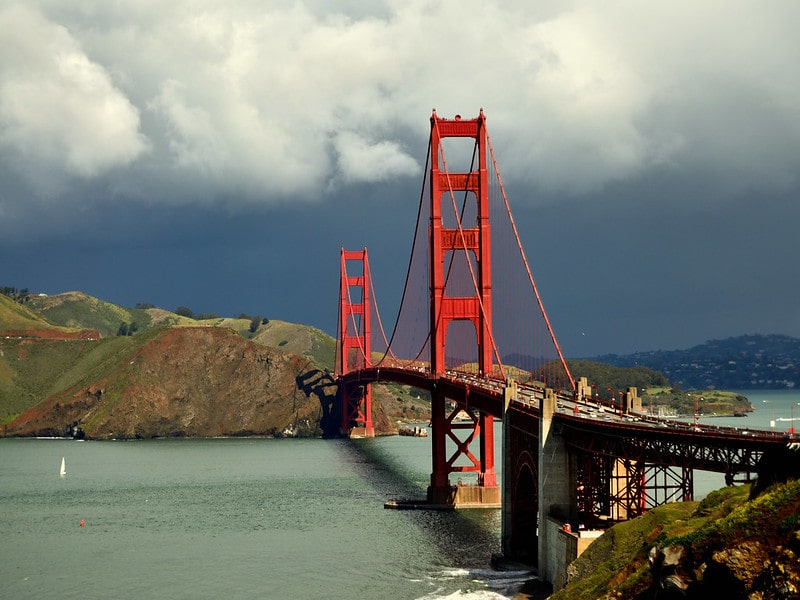
19. The Iconic Fog Horns
The fog horns, mounted on the bridge at the south and middle tower, are virtually as iconic as the structure itself. At different times, each horn produces a different tone to assist in safely guiding ships through dense fog.
20. Most Photographed
The Golden Gate Bridge is among the most photographed across the globe. It has also been featured in a number of television shows. In California, it is the most visited structure.
21. Bridge Closure
There are three times that the bridge has been closed since opening in 1937. Bad weather has been the main reason for the closure, with anniversary and construction work being the others.
22. Daily Averages
On average, 6,000 bicycles, 10,000 pedestrians and 112,000 motor vehicles use the Golden Gate Bridge on a daily basis.
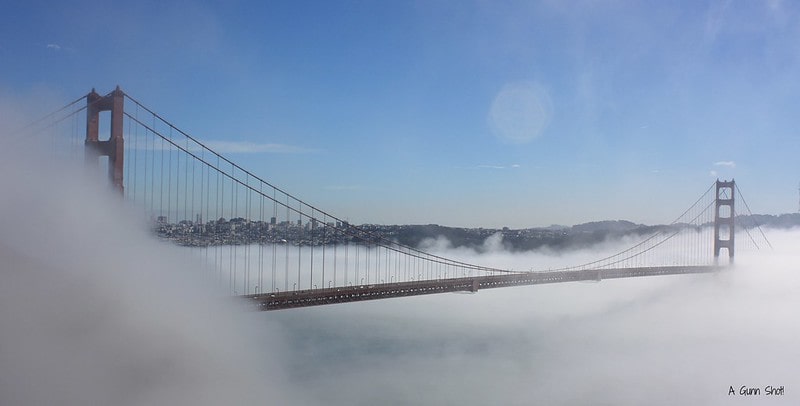
23. Abundance of Fog Around the Bridge
For most of the day, the Golden Gate Bridge is covered with fog. However, it is typically at its foggiest in the mornings and the evenings.
24. Crowd Flattening of the Arch on 50th Anniversary
On May 24, 1987, a bridge walk was organized to commemorate the 50th anniversary of the Golden Gate Bridge. A projected 300,000 individuals packed onto the bridge, which caused it to groan and sway. The unprecedented weight resulted in the middle of the bridge sagging seven feet under, causing the flattening of the iconic arch.
25. Temporary Closure
Following the flattening of the arch, the bridge was quickly closed by officials to prevent the crossing of an additional 600,000 people. Afterward, engineers said the bridge was never at risk of collapsing as it was built to bend.
26. Engineering Wonder
In 1994, the American Society of Civil Engineers categorized the bridge as being among the seven civil engineering wonders in the U.S.
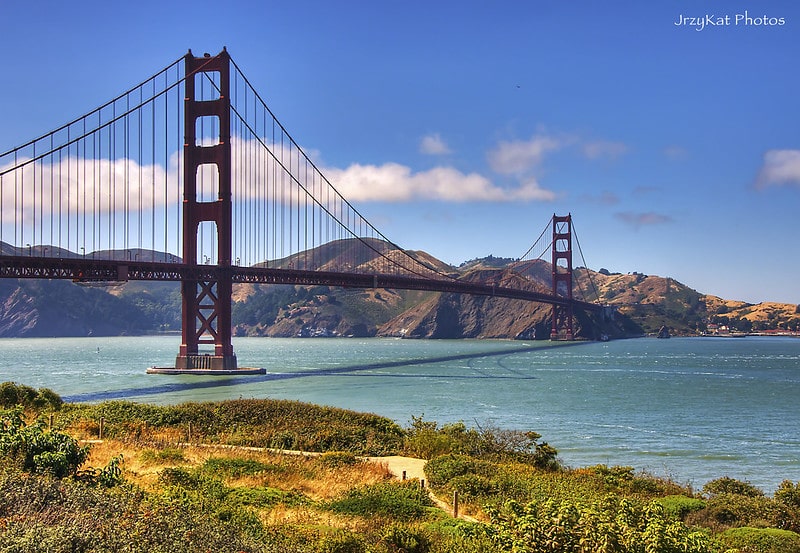
27. Tourist Attractions
To attract tourists, the bridge had numerous attractions including tourist plaza and Bridge Round House. The Bridge Round House with its Art Deco design was one of the most popular destination. It served as a starting point for a private gift shop and a number of commercial tours of the structure.
28. Easily Noticeable Even From a Far Distance
The deck of the bridge is tall and massive and it can be easily seen even from Alcatraz and Fisherman’s Wharf, which are at considerable distances away from the bridge. This incredible piece of art can be viewed by tourists even from spots along the northern waterfront of the city.
. . . continue reading on the next page
